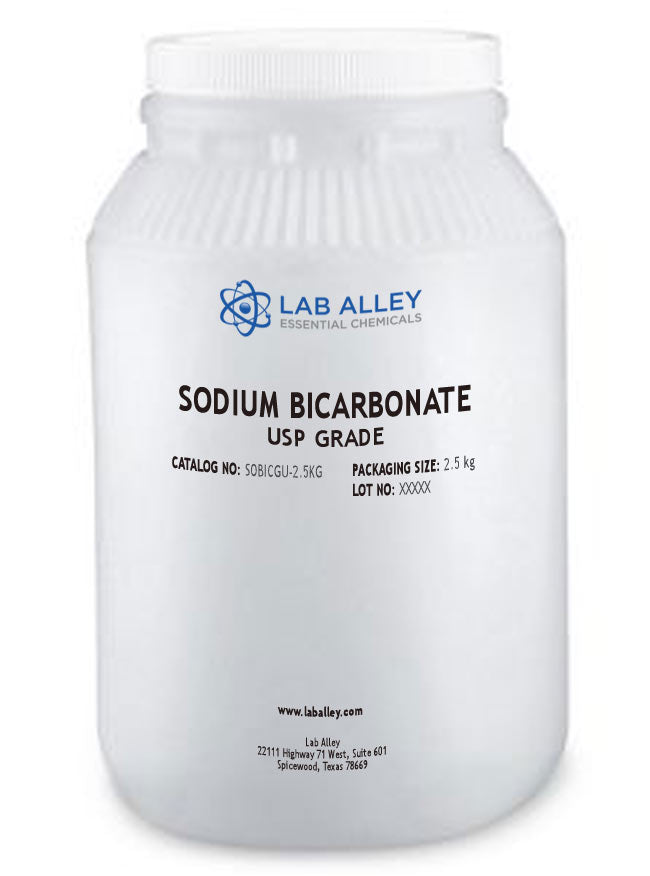How to Safely Dispose of Sodium Bicarbonate
Sodium bicarbonate (NaHCO₃), also known as baking soda, is widely recognized for its versatility and low toxicity. It’s used across industries - from baking and pharmaceuticals to laboratories and wastewater treatment - because it is safe, cost-effective, and environmentally benign under normal use. However, even substances considered non-hazardous require thoughtful disposal procedures, especially in bulk or industrial settings.
Improper disposal of sodium bicarbonate may lead to unintended environmental consequences, workplace safety risks, or regulatory violations. Following appropriate protocols not only ensures safety but also demonstrates environmental responsibility and adherence to industry standards.

In this article, we’ll explain:
1. Why Proper Disposal Matters
2. How to Dispose of Sodium Bicarbonate Properly
Why Proper Disposal Matters
Although sodium bicarbonate is generally biodegradable and non-toxic, disposing of it without consideration can still cause harm or trigger regulatory issues, particularly when used in industrial volumes or combined with other substances.
Environmental Protection
In moderate quantities, sodium bicarbonate poses minimal threat to ecosystems. But when disposed of in large amounts - especially into soil or aquatic systems - it can disrupt pH balance, leading to alkaline stress in plants or aquatic organisms. Municipal wastewater systems are generally equipped to manage small discharges, but larger volumes can interfere with treatment efficiency or exceed permitted pH ranges.
Health and Safety
While not corrosive or acutely toxic, sodium bicarbonate dust may cause respiratory irritation or skin dryness, especially when handled in bulk without protective gear. More critically, if sodium bicarbonate is mixed with strong acids or reactive chemicals, it may cause vigorous reactions, releasing carbon dioxide gas and heat - posing a hazard in enclosed or pressurized environments.
Legal Compliance
Disposal guidelines for sodium bicarbonate vary depending on the concentration, volume, and whether it’s been contaminated. In many jurisdictions, even non-hazardous waste must comply with EPA, OSHA, and local environmental health and safety regulations. Industrial or laboratory users are often required to maintain documentation and follow established protocols for chemical waste disposal.
How to Dispose of Sodium Bicarbonate Properly
Whether you’re working in a lab, industrial facility, or commercial kitchen, the following steps can help you dispose of sodium bicarbonate responsibly and in compliance with regulations.
1. Check Local Regulations First
Always begin by reviewing the requirements of your local wastewater authority or environmental health and safety (EHS) office. Rules may differ by region, especially in facilities governed by municipal, state, or federal environmental agencies.
What may be permissible for household quantities could be strictly regulated in a laboratory or production plant.
2. Consider Neutralization (If Applicable)
Sodium bicarbonate itself does not require neutralization prior to disposal if it is uncontaminated. However, it is commonly used to neutralize acidic wastes - in which case the resulting mixture may need to be tested for pH and classified appropriately before disposal.
If sodium bicarbonate has been used as a neutralizing agent for hazardous acids, the resulting solution may be subject to different disposal requirements.
3. Use the Right Disposal Method Based on Contamination
Disposal procedures depend on whether the sodium bicarbonate is pure or contaminated.
- Uncontaminated Waste (Non-Hazardous): Small quantities may be safely diluted in water and flushed down the drain, in accordance with local sewer codes. This method is generally acceptable for household, food service, or small-scale lab use.
- Contaminated or Industrial Waste: If sodium bicarbonate has been exposed to hazardous materials, solvents, or reactive agents, it must be treated as hazardous waste. In this case:
- Place material in a sealed, labeled container
- Store in a designated hazardous waste area
- Arrange for pickup by a licensed hazardous waste disposal service
4. Never Mix with Incompatible Chemicals
It may be tempting to combine leftover chemicals for disposal, but this can be extremely dangerous.
Avoid mixing sodium bicarbonate with:
- Acids (e.g., hydrochloric, sulfuric): Can cause gas release and foaming
- Oxidizers: May produce unexpected heat or corrosive byproducts
- Reactive metals in acidic conditions: Can lead to hydrogen gas formation
Chemical reactions - even with low-toxicity compounds - can escalate quickly when performed outside of controlled conditions.
5. Follow PPE and Handling Protocols
If disposing of sodium bicarbonate in large quantities or under dusty conditions, always use appropriate personal protective equipment (PPE):
- Gloves to prevent skin dryness or irritation
- Goggles to protect eyes from dust exposure
- Lab coat or apron to minimize skin contact
- Dust mask or respirator if airborne particles are present
Work in a well-ventilated area to avoid accumulation of dust or carbon dioxide gas, especially when neutralizing acids or handling residual chemical mixtures.
Conclusion
Although sodium bicarbonate is not classified as a hazardous chemical, safe and compliant disposal still matters - particularly in settings where it is handled in bulk or used in combination with other substances. By following best practices for segregation, disposal, and PPE, you help protect workers, facilities, and the environment.
Quick Recap:
- Check with your local EHS or wastewater authority
- Only flush small, uncontaminated amounts with water
- Label and store hazardous mixtures for proper disposal
- Never mix with acids or oxidizers outside of controlled environments
- Always use proper protective gear
For commercial or industrial facilities, partnering with a certified hazardous waste handler is the best way to ensure safe and traceable disposal. When in doubt, consult your SDS (Safety Data Sheet) or contact your chemical supplier for disposal guidance tailored to your operations.
Where to Buy Sodium Bicarbonate
As your trusted partner in chemical supply, Lab Alley is always striving to meet the growing demands of our customers. We want you to be able to access all of your chemical needs in one place, along with streamlined online ordering and fast shipping.
Due to popular demand from our valued clientele, Lab Alley's Sodium Bicarbonate is available in a range of purities and packaging options to suit various commercial, laboratory, and personal needs.




